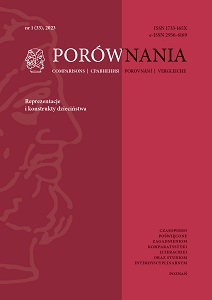Zakłócona alegoryzacja dzieciństwa w Szumie Magdaleny Tulli
Disturbed Allegorization of Childhood in Szum by Magdalena Tulli
Author(s): Katarzyna Wądolny-TatarSubject(s): Polish Literature, Theory of Literature, Sociology of Literature
Published by: Uniwersytet Adama Mickiewicza
Keywords: disturbed allegorization; childhood; Magdalena Tulli; post-memory prose;
Summary/Abstract: The disturbed allegorization of childhood in the novel Szum (Noise) by Magdalena Tulli goes beyond the tropology of “I” proposed by Ryszard Nycz. The crystallization of childhood images is hindered by the epigenetic mode of inheriting traumatic experiences by the so-called second generation. Repetition (even of the very frame of happening) also means the return of the inherited trauma. Limited disclosure of the difficult past (also as the personal hermetism of adults) and the mystery of the past gravitate towards an apophatic representation of reality. In the course of the narrative, limited sharing is also associated with the mother’s dementia disease, so it gains biological and psychological motivations in addition to historical and political ones. Allegorization of childhood becomes substitutive due to the existence of masks and camouflages, the so-called identity allegories (Marta Tomczok) and the need for affective compensation through substitute forms of social inclusion. The rejected and lonely girl in the plot of Szum by Tulli makes with her mother and aunt a “covenant of shame” (Aleksandra Szczepan), lives in a world of imaginary figures functioning in her mind and in children’s drawings (a foxfriend, an SS man with his hands tied), uses mental escapism, consistently plays the role of a difficult and strange child. At the narrative level, Tulli signals a disturbed allegorization of childhood, which is not determined in a literary uniform image, through the endogeneity of the protagonist’s inner world, the interlocation of her experience (past of her parents inherited through post-memory, Polish-Italian origin, Jewish roots of her mother), metaphors of closure, irony as a parable of allegory, literary spectmologies, acoustic allegorization, and the construction of a narrator that is simultaneously affectionate and affected (Justyna Tabaszewska). These measures allow the characters to separate from the experience, the level of the author’s story permeating the level of the events told, and create the metalleptic subject (Tomasz Kunz).
Journal: Porównania
- Issue Year: 33/2023
- Issue No: 1
- Page Range: 183-202
- Page Count: 20
- Language: Polish

